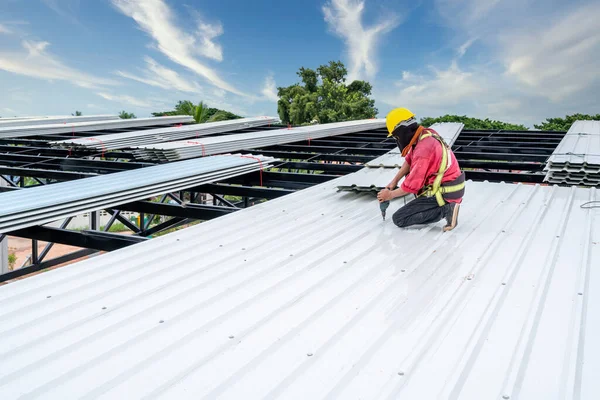A commercial property’s roof is an important investment. It safeguards all the other business investments within the building and enhances the property’s image.
Understanding the significance of roof section 179 in commercial properties is crucial for businesses. Performing routine roof maintenance, including cleaning, repairing, and replacing shingles, as well as clearing debris, not only ensures compliance with roof Section 179 but also prevents leaks, ultimately saving businesses thousands in emergency repairs.
1. Increased Property Value
A commercial roof’s lifespan is limited and extending it is important for business owners. Routine inspections and timely repairs reduce the risk of premature aging, which saves businesses money in the long run.
A well-maintained commercial roof is an attractive selling point for potential buyers or tenants and enhances a building’s aesthetic. A well-maintained roof also protects the building’s interior and assets, ensuring it is safe for occupants.
Regular maintenance also ensures that a commercial roof is functioning properly, which is vital to avoiding damage to the property and disrupting business operations. Additionally, keeping the roof in good condition increases energy efficiency, saving businesses on their utility bills. This is especially important during the scorching summers and chilly winters.
2. Increased Energy Efficiency
Businesses that regularly conduct commercial roof maintenance enjoy greater energy efficiency. This is because a well-maintained roof ensures that conditioned air is kept in and not escaping, reducing energy costs.
When a commercial property’s roof is in poor condition, it can lead to expensive electricity and utility bills due to leaks and lack of insulation. Regular inspections help identify these issues and repair them before they become major problems, saving businesses from costly repairs and energy bills.
Businesses can further reduce their energy costs by installing energy-efficient features, such as light-colored shingles, reflecting solar panels and more. This allows more natural sunlight to enter a building, reducing the need for electric lighting during the day and making the space more comfortable for occupants. The resulting savings on energy bills also adds to the overall value of a commercial property.
3. Increased Employee Productivity
The roof is the foundation of a business and plays an essential role in maintaining the integrity of the entire facility. Regular commercial roof maintenance and inspections help identify potential issues and reduce costs in the long run.
For example, addressing leaks as soon as they occur prevents water damage to equipment and inventory which may disrupt business operations. It also minimizes the need for extensive repairs and replacements.
Commercial roof maintenance also helps improve employee productivity and comfort. In fact, studies have shown that employees are more productive when they feel healthy and safe. A well-maintained commercial roof is more resilient against severe weather conditions which contributes to a productive indoor environment. This allows the workforce to focus on their tasks without disruption.
4. Increased Customer Satisfaction
Commercial roofs are significant investments and should be protected to keep their market value. Proactive maintenance practices ensure that potential issues are identified and repaired promptly – saving owners from expensive damage expenses that could lower the overall property value.
Commercial businesses can’t operate effectively when a leaky roof causes water damage. If unaddressed, small leaks can escalate to extensive structural damage that may require a full roof replacement.
Regular roof inspections identify and address these issues before they cause major problems, such as water intrusion or deterioration of building materials. This can help avoid costly business disruptions and improve customer satisfaction. In addition, consistent maintenance is critical to meeting safety and building code requirements. This creates a safer environment for employees and customers and prevents legal consequences for non-compliance.
5. Reduced Maintenance Costs
Commercial property owners can significantly reduce the risk of costly repairs or commercial roof replacements by taking a proactive approach to their roofing maintenance. Commercial roof maintenance also reduces downtime, which saves businesses thousands in lost revenue from having to temporarily relocate operations or close for extensive commercial roofing repairs.
In addition, proper commercial roof maintenance can help reduce energy costs by keeping the building cooler during scorching summers and warmer during chilly winters. This reduction in reliance on air conditioning systems and heating units can translate into substantial savings for businesses.
A healthy roof protects a building’s interior and its inventory, equipment, and assets from weather-related damages. These benefits, combined with the reduced risk of health and safety claims and the increased value of the property, make commercial roof maintenance a wise financial investment for business owners.
